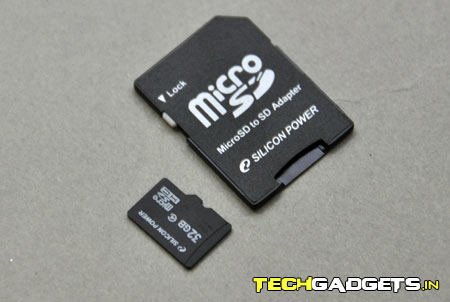
We’ve managed to get our hands on the Silicon Power 32GB class 4 microSDHC card and a microSD to SD converter to diagnose. Since high-tech gadgets currently hold the position of supreme, the demand for expandable memory seems to have sky-rocketed. To meet these requirements, every new device comes with the capability of supporting a workload of memory. Similarly, the Silicon Power microSDHC card is equipped with a high storage capacity of 32GB, allowing users to make the most of their devices. Moving on with our review, we’ve further stated the highlights on the SD cards class standards.
The highly demanded huge capacity memory cards have become ideal for most devices, but does a memory card only depend on its storage capacity? Well, we beg to differ. Every manufacturer categorizes their chips on certain standards. If you’ve ever noticed, most memory cards host a small number encircled just besides the storage information. This printed number is what makes the most amount of difference on the cards functionality. Just like a microSDHC card with the number four encircled, would lead it to be of the class 4 variant category whereas, a card holding the number ten would make it a class 10 standard.
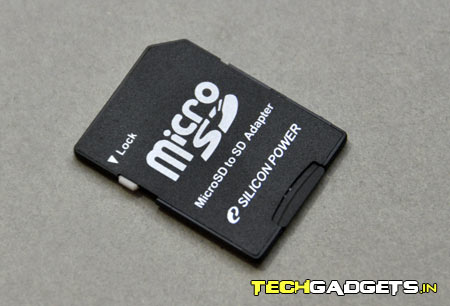
But, what does the number really do? In simple terms higher the number, greater would be read and write speeds achieved. Starting off at class 2, users can expect minimum data rates of 2Mbps, 4Mbps at class 4, and so on until ten. Bringing us to the main part of this review, the Silicon Power 32GB class 4 microSDHC holds class 4 standards, leaving us with high hopes for the card to deliver a minimum of 4Mbps write speed. By running the tiny speck through a number of benchmark tests, the time of judgment was at hand on whether the chip’s capability of meeting its promised speeds is met or not. To conduct these operations, we utilized the 5-in-one Silicon Power card reader and performed specific tests on the microSDHC card and a second one whilst the chip was inserted into the SD converter.
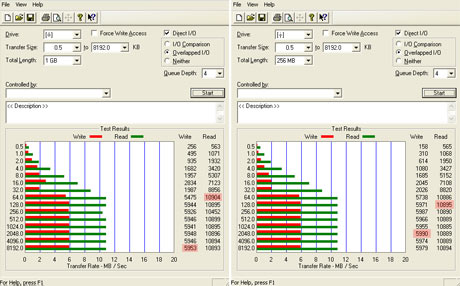
With the microSD card hooked up and ready to go, we initiated our first test on the ATTO bench32 program. The fruits of our time spent turned sweet as honey with the write speeds achieving well above the 4Mbps mark and topping at 5.95Mbps. While on the other side, read speeds managed to peak at 10.89Mbps. Further, when benchmarked with the converter, we noticed an elevation in the write speeds, rising up to 5.99Mbps, an increase in around 40Kbps. Whilst, read speeds remained stagnant at 10.89Mbps. To confirm our findings we conducted a second test, but this time using the Crystal Disk Mark benchmark tool.
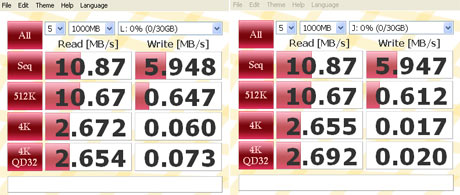
Hoping to achieve the 6Mbps mark, the CDM tool managed to provide 10.87Mbps in read and 5.94Mbps in write speeds. Whereas, when connected to the SD converter, the difference found was minimal and showed results almost similar to the speeds derived with only the microSDHC card. On comparing both test results, we ruled out an average of about 5.9Mbps in write and 10.8 Mbps in read speed.
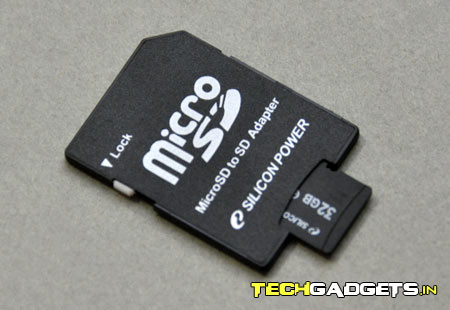
Since the Silicon Power 32GB microSDHC is capable of packing-in speeds well above the promised 4Mbps mark (almost reaching 6Mbps) and also maintaining stable read and write speeds during operations, we give it a rating of 8 out of 10. With high transfer rates, the chip proclaims itself worthy for modern devices like smartphone, tablets, cameras and others. Additionally, the card can hold up to 9,000 songs at bitrates of 128Kbps (average size of 3MB per track), 6,400 images sized at around 5MB each or over 500 minutes of TV resolution (640 x 480) VGA-quality videos.




